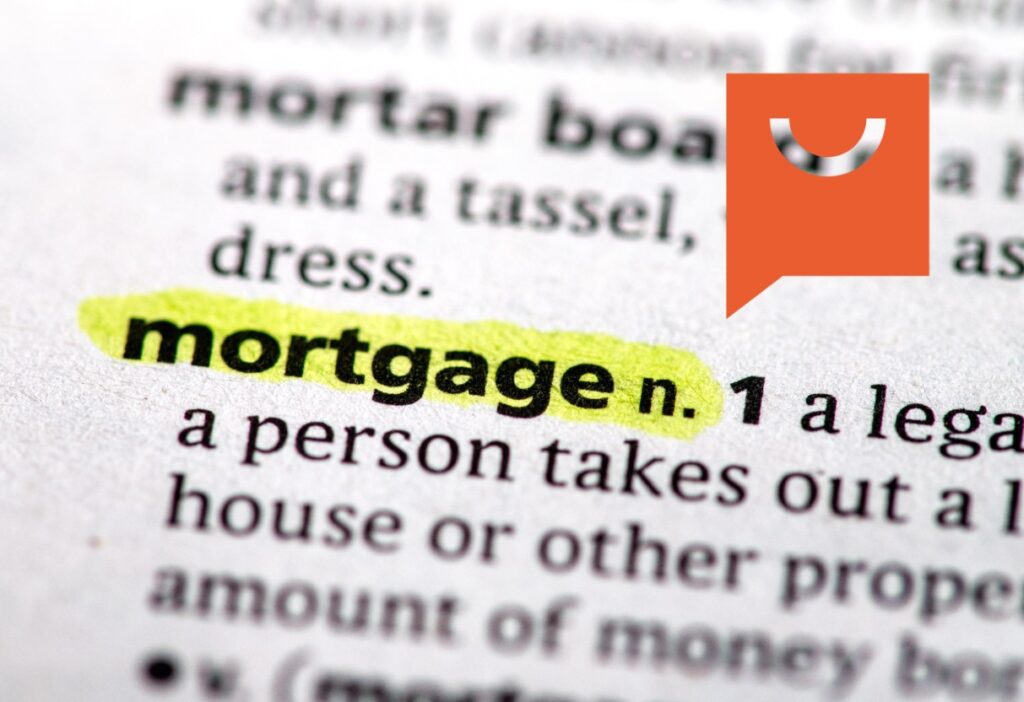Anúncios
Refinancing your mortgage can save you thousands of dollars over the life of your loan. It involves replacing your current mortgage with a new one, usually with better terms or a lower interest rate.

Understanding when to refinance and how to navigate the process can make a significant difference in your financial health. Many homeowners miss out on refinancing opportunities because they find the process confusing or overwhelming.
This guide breaks down each step of mortgage refinancing into simple, actionable tasks.
You’ll learn how to determine if refinancing makes sense for your situation, what documents you’ll need, and how to compare lenders to get the best possible deal.
Understanding Mortgage Refinancing
Mortgage refinancing can help homeowners save money and achieve financial goals. The process involves replacing your current home loan with a new one, often with better terms or features that align with your current needs.
What Is Mortgage Refinancing?
Mortgage refinancing is the process of replacing an existing mortgage with a new loan. The new mortgage pays off the original loan, creating a fresh agreement between you and a lender. This new loan typically comes with different terms than your original mortgage.
When you refinance, you’ll go through a similar application process as when you first purchased your home. The lender will check your credit score, debt-to-income ratio, and home value before approving your application.
The refinancing process usually takes 30-45 days to complete.
During this time, you’ll need to submit documentation, get your home appraised, and attend a closing to sign the new loan documents.
Reasons for Refinancing
Homeowners refinance their mortgages for various financial benefits. One common reason is to secure a lower interest rate, which can save thousands of dollars over the loan’s lifetime.
Many people refinance to reduce their monthly payments, making their budget more manageable. This can be achieved by getting a lower rate or extending the loan term.
Refinancing allows homeowners to tap into their home equity through cash-out options. This money can be used for home improvements, debt consolidation, or other significant expenses.
Some homeowners refinance to switch from an adjustable-rate mortgage (ARM) to a fixed-rate loan for more payment stability. Others might want to remove private mortgage insurance (PMI) or a co-borrower from the loan.
Types of Refinancing Options
Rate-and-term refinancing changes your interest rate, loan term, or both. This option is ideal for borrowers looking to reduce their payment or pay off their mortgage faster. No additional money is borrowed in this type.
Cash-out refinancing allows you to borrow more than you currently owe and receive the difference in cash. The new loan amount includes your existing mortgage balance plus the cash you’re taking out. This option requires sufficient home equity.
Cash-in refinancing involves bringing money to closing to reduce your loan balance. This can help you qualify for better rates or eliminate PMI if you’re close to 20% equity.
FHA, VA, and USDA streamline refinances offer simplified processes for borrowers with government-backed loans. These often require less documentation and sometimes no appraisal.
Preparing for Refinance

Before starting the refinance process, you need to assess your financial situation, understand your credit standing, and know how much equity you have in your home.
These key elements will determine if refinancing makes sense for you and what rates you might qualify for.
Evaluating Financial Readiness
Refinancing isn’t free. Most homeowners will pay 2-6% of the loan amount in closing costs.
Calculate these expenses against your potential savings to determine if refinancing makes financial sense.
A good rule of thumb: If you can recover your closing costs within 2-3 years through lower monthly payments, refinancing is worth considering.
Consider these questions:
- How long do you plan to stay in your home?
- Can you afford the closing costs?
- What is your current interest rate versus available rates?
Don’t forget to factor in your current financial stability. Lenders will examine your income, employment history, and debt-to-income ratio. Most prefer a ratio below 43%.
Knowing Your Credit Score
Your credit score significantly impacts the interest rates you’ll be offered. Higher scores typically lead to better rates and terms.
Minimum credit scores typically needed:
- Conventional loans: 620+
- FHA loans: 580+
- VA loans: 620+ (though some lenders accept lower)
Before applying, check your credit report for errors. You can get free reports annually from all three major bureaus at AnnualCreditReport.com.
Take time to improve your score if needed:
- Pay down existing debt
- Make all payments on time
- Avoid opening new credit accounts
- Keep credit card balances below 30% of limits
Understanding Home Equity
Home equity represents the portion of your home that you truly “own.” It’s calculated by subtracting your mortgage balance from your home’s current market value.
Most lenders require at least 20% equity for the best refinance rates. With less equity, you might face higher interest rates or need to pay for private mortgage insurance (PMI).
To determine your equity percentage:
- Get a current home value estimate (appraisal, realtor opinion, online tools)
- Divide your current mortgage balance by this value
- Subtract the result from 1, then multiply by 100
For example, if your home is worth $300,000 and you owe $210,000, your equity is 30%.
Some refinancing options, like cash-out refinances, specifically tap into this equity, allowing you to borrow against it.
The Refinancing Process

Refinancing a mortgage involves several key steps that require careful attention and planning. Understanding each stage of the process helps homeowners navigate refinancing efficiently and secure the best possible terms.
Choosing the Right Lender
Finding the right lender is crucial for a successful refinance. Start by researching different types of lenders, including banks, credit unions, and online mortgage companies. Each offers different advantages.
Traditional banks might provide personalized service if you’re already a customer. Credit unions often offer lower rates and fees to members. Online lenders typically streamline the process and may have competitive rates.
Consider asking these questions when evaluating lenders:
- What are their customer service ratings?
- Do they specialize in your specific type of refinance?
- How transparent are they about fees and costs?
Request recommendations from friends or family who recently refinanced. Reviews on consumer websites can also provide valuable insights into lender reliability.
Comparing Rates and Terms
Interest rates significantly impact the cost of refinancing. Even a small difference in rates can save thousands over the loan term.
Request loan estimates from 3-5 lenders within a short timeframe. This allows for accurate comparisons while minimizing impacts to your credit score.
Pay attention to:
- APR (Annual Percentage Rate) – reflects the true cost of the loan
- Loan term – shorter terms mean higher payments but less interest overall
- Fixed vs. adjustable rates – fixed provides stability, adjustable may start lower
- Points and fees – upfront costs that affect the overall value
Use online calculators to compare the long-term costs of different loan options. Remember that the lowest rate isn’t always the best deal when considering all fees.
Application and Documentation
The application process requires thorough documentation. Being organized helps speed up approval.
Common documents needed include:
- Recent pay stubs (last 30 days)
- W-2 forms and tax returns (past 2 years)
- Bank statements (last 2-3 months)
- Investment account statements
- Current mortgage statement
- Homeowners insurance information
- Photo identification
Many lenders offer online applications that simplify document uploads. Some even provide secure portals where you can track the status of your application.
Be prepared to explain any credit issues, large deposits, or employment gaps. Prompt responses to lender questions help keep the process moving smoothly.
Property Appraisal
Most refinances require a professional appraisal to determine the current home value. This step is crucial since lenders base loan amounts on the home’s value.
The appraisal typically costs $300-$500 and involves an appraiser visiting the property. They examine the home’s condition, size, and features while comparing it to similar properties recently sold in the area.
Consider these tips before the appraisal:
- Make minor repairs to address obvious issues
- Tidy up the property inside and out
- Prepare a list of recent improvements with costs
- Research comparable home sales in your neighborhood
Low appraisals can limit refinancing options. If the appraisal comes in lower than expected, you can request a review or provide additional information about the property.
Loan Approval and Closing
After reviewing all documentation and the appraisal, the lender makes a final decision. This underwriting process typically takes 1-3 weeks.
Once approved, you’ll receive a Closing Disclosure outlining all terms and costs. Review this document carefully and compare it to your initial Loan Estimate. Federal law requires lenders to provide this disclosure at least three business days before closing.
The closing involves signing numerous documents, including:
- Promissory note
- Deed of trust or mortgage
- Closing disclosure
- Various affidavits and declarations
Many lenders now offer electronic closing options. Some states require an attorney to be present at closing, while others don’t.
After closing, you have a rescission period of three business days for primary residence refinances. This allows you to cancel the refinance if needed.
After Refinancing

Once you’ve completed your mortgage refinance, you’ll need to adapt to your new loan terms and plan for the future. The changes to your payment amount, schedule, and loan duration require attention to detail and some financial adjustments.
Managing Your New Mortgage
Make sure to set up your new payment method promptly. Many lenders offer automatic payments, which can help you avoid late fees and potential credit score damage.
Keep all refinancing documentation in a safe place. This includes your closing disclosure, loan agreement, and payment schedule. You may need these documents for tax purposes or future financial decisions.
Review your first few statements carefully. Confirm that the interest rate, payment amount, and other terms match what you agreed to during closing.
Important reminder: If your old mortgage servicer continues to withdraw payments, contact them immediately. Double payments can strain your budget unnecessarily.
Update your budget to reflect new payment amounts. If you’re saving money monthly, consider directing those savings toward:
- Emergency fund contributions
- Additional principal payments
- Retirement accounts
- Other financial goals
Considerations for Future Financial Planning
Evaluate how your refinance affects your long-term financial strategy.
If you extended your loan term, you may have lower monthly payments but will pay more interest over time.
Tax implications:
The mortgage interest deduction changes with refinancing.
Consult a tax professional to understand how your new loan affects your tax situation.
Consider making extra payments toward principal if your budget allows.
Even small additional amounts can significantly reduce your total interest paid and shorten your loan term.
Reassess your refinance decision periodically.
Interest rates fluctuate, and your financial situation may change.
Most experts suggest reviewing your mortgage every 1-2 years.
Avoid taking on new significant debt after refinancing.
This helps maintain the improved debt-to-income ratio you achieved through refinancing.